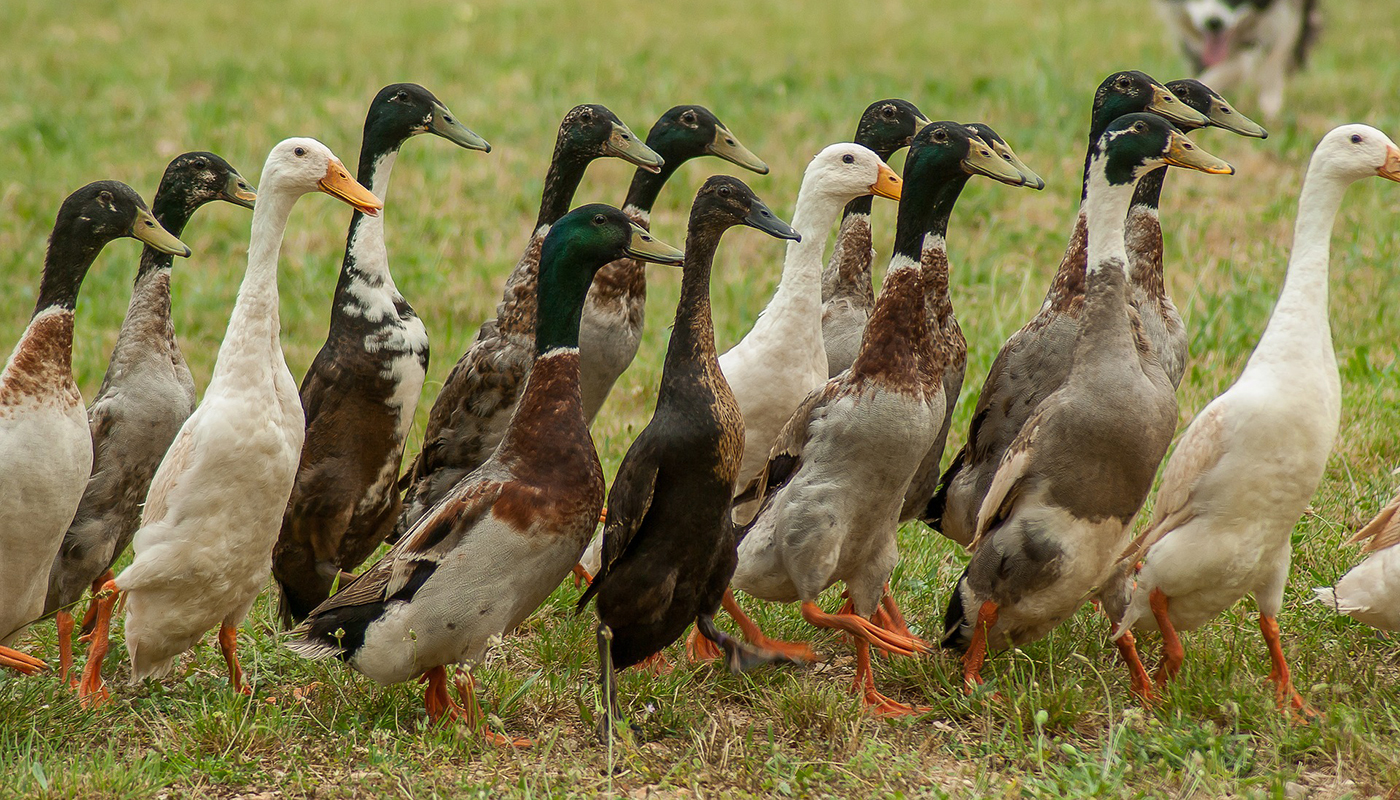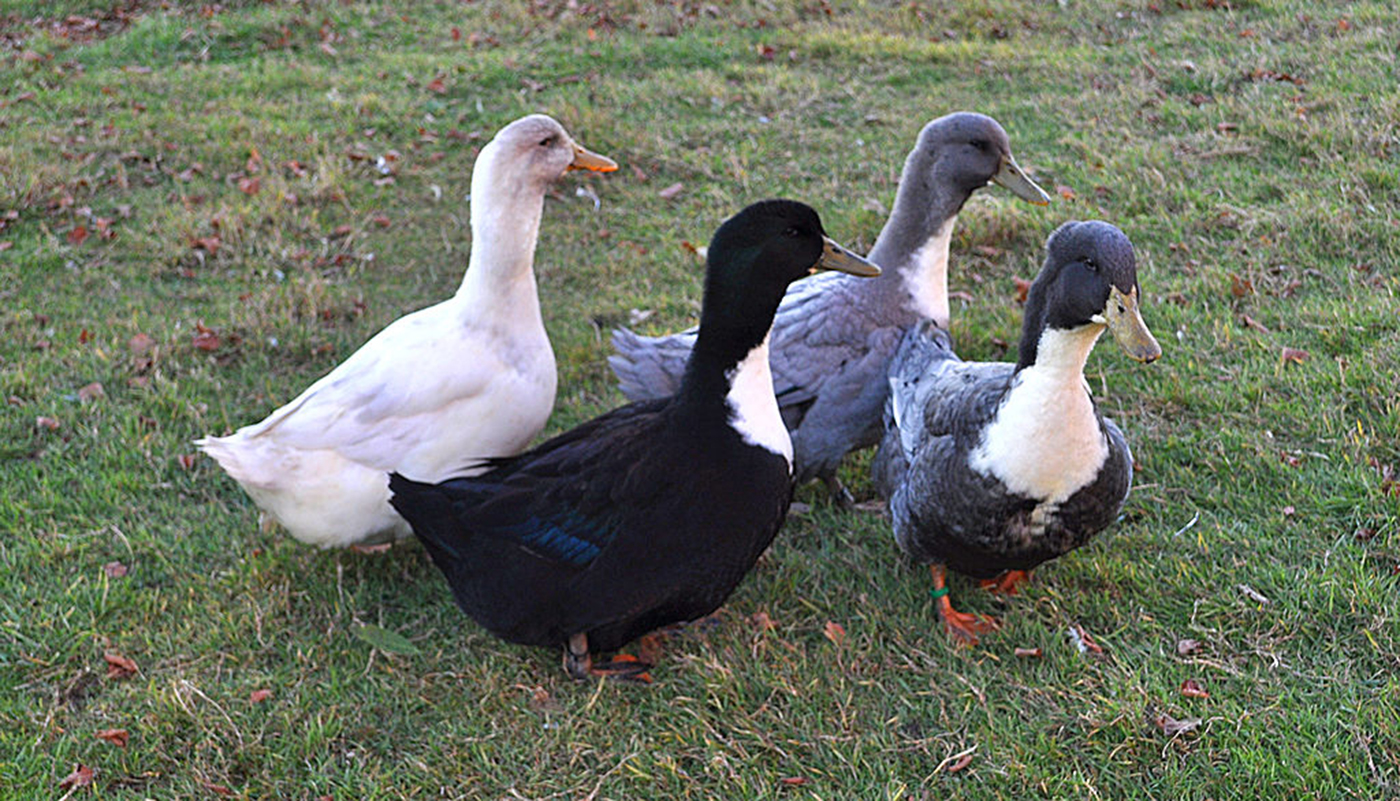
The East Indie duck is a Bantam duck breed that is believed to have originated in the USA.
They are not the best layers of eggs, but their eggs are bound to be a conversation piece at the dinner table.
The hens have been known to lay black to dark gray medium sized eggs. These will become lights depending on the season they start at a black/dark gray and will eventually become a light gray near the end of the laying season. They do not lay many eggs in a year though.
They are mainly kept for show and ornamental purposes with their beautiful shiny plumage that glistens with either blue or green sheen. They, as with most Bantam duck breeds, are excellent flyers so you may have to watch this if you live in a built-up area.
GENERAL INFORMATION |
|
|---|---|
| Country of Origin: | North America |
| American Poultry Association: | yes Recognized by the American Poultry Association |
| Duck Category: | Bantam |
| Duck Class: | American |
| Colors: | Black, Date of acceptance: 1874 |
| Good starter duck? | Yes |
| You may Also Like: | TOP 10 GOOD STARTER DUCK BREEDS |
| Bantam Variety Available? | No |
| You may Also Like: | 10 BEST BANTAM DUCK BREEDS |
| Other names known by | Black East Indian |
APPEARANCE / IDENTIFICATION
| DUCK BITS | DESCRIPTION | COLOR | |||||||
|---|---|---|---|---|---|---|---|---|---|
| EYES⇒ | Same for M & F | Black | |||||||
| BILL⇒ | Same for M & F | Black | |||||||
| * Black bean tipped | |||||||||
| CRESTED? | No | ||||||||
| LEGS⇒ | Same for M & F Short Length |
Dusky Black | |||||||
| FEET⇒ | Same for M & F Medium Sized |
Black | |||||||
| WINGS⇒ | Same for M & F | Black with a green sheen | |||||||
| FEATHERS⇒ | Same for M & F | Black with a beautiful green sheen | |||||||
| Males head is fuller and more green than that of the females | |||||||||
| SKIN COLOR⇒ | Same for M & F | Dark | |||||||
| AVERAGE WEIGHT⇒ |
|
||||||||
| *Bean: This is also called the nail. It is a small round bump found at the end of the duck’s bill. It is used for defence and to catch insects. It is almost like a fingernail and is damaged can grow back. It can also get overgrown much like fingernails if they do not have something to grind it down on. | |||||||||
| ** Note: This is an average weight for the male duck and not a guaranteed weight | |||||||||
USE/PURPOSE |
||||||||||||||||||||||||||||||||||||
|---|---|---|---|---|---|---|---|---|---|---|---|---|---|---|---|---|---|---|---|---|---|---|---|---|---|---|---|---|---|---|---|---|---|---|---|---|
Females/Hens⇒ |
Ornamental, show and pets
|
|||||||||||||||||||||||||||||||||||
Males/Drakes⇒ |
Breeding, Show and pets
|
TEMPERAMENT |
|
|---|---|
| “Gentle, Calm and sweet little ducks” | |
| Good with Kids? | They are good with supervised kids |
| You may Also Like: | 10 BEST DUCK BREEDS TO KEEP AS FAMILY PET |
| Flyers? | They are excellent strong flyers |
| Noisy Birds? | They are pretty quiet especially compared to some breeds and chickens |
| Interact with other ducks? | They will interact with other ducks but prefer those of their size |
| Best duck breeds to mix them with: | Any domestic duck breed preferably another Bantam breed |
| Other animals? | They avoid another domestic animal. Take care with dogs and cats around the ducks |
IDEAL ENVIRONMENT |
|
|---|---|
| “They like to be close to home but should be penned or have their wings clipped” | |
| Ideal Garden Size? | Small to medium |
| Can be Confined? | Yes |
| Free-Range | They are excellent hunters |
| Penned Free-Ranging? | Yes |
| Foragers | Yes |
| Endures heat well | Yes |
| Endures cold well | Yes |
| Special Requirements? | No |
| Ideal Duck House: | A decent sized well insulated and ventilated safe hutch that will comfortably house all the ducks |
| Ideal Duck Pond: | Small shallow pond or kiddie’s plastic splash pool |
| Flock/Paddling Size: | Two or more duck companions in the flock |
| You may Also Like: | 22 Best DOMESTIC DUCK BREEDS |
GOOD TO KNOW |
|
|---|---|
| Special Care/Attention Requirements? | They have no special needs |
| Known Predators: | Check with animal control in your area for known predators |
| Conservations Status: | Not Listed For more information on poultry, conservation status, check the American Livestock Conservancy Website |
| Breeders Clubs: | It is best to check with the American Poultry Association for various clubs and or organizations. |
| Where to buy them: | Purely Poultry, Omlet US or a poultry dealer or farmers near your locations, the APA or check with the American Livestock Conservancy |
| Other: | If you do not want to risk having your ducks shipped check with your local poultry farms for advice on your nearest supplier. |
HISTORY
Although this duck is called the East Indies duck it was developed in America during the 19th century. Because Exotic birds were a big deal in the early 19th century the duck was probably given this name in order to ensure it was a draw.
Its beauty and size have made it very popular with the poultry fanciers who keep and raise them as show birds.
Even though the breed was developed in America the English beat us to having the duck standardized in the United Kingdom.
The duck breed was standardized in the UK in 1865 but only accepted into the Standards of Perfection by the APA in 1874.
Although the breed can be friendly and is rather a quiet shy breed, caution must be given around mating season or a duck/drake is looking after a nest of eggs.
Although the bird’s plumage is mostly black or blue they will start to develop white feathers as they age. This is a normal process that no amount of selective breeding has been known to breed out.
But if the duck is mated to a good breeding male they will have the cutest little black ducklings. They also have black legs and bills with the blue variety having a deep purple-blue bill and legs.
They do tend to make a great back garden duck in addition to the flock as they are beautiful (making excellent show birds) and they have quite a wonderful nature too. They are hardy for their size and make a good starter duck. Their average weight is around 400 grams for the female and 900 grams for the male.
It must be noted that they can be a shy bird but if hand reared they become very tame, friendly are such loyal little ducks!
Health
They do not have known health issues
- Ducks need water to ensure they do not get “wet feather” disease. This is where the preening gland dries out. Water also stops them from getting pests such as mites, fleas, ticks, lice, etc.
- Well, fed ducks should hardly have any health issues.
- Any birds kept in a flock need to be dewormed. Although ducks are not as prone as other poultry they should still have a de-worming regime. Speak to a local vet or poultry experts for advice. Our article on Healthy Ducks has some great tips and advice on de-worming ducks.
 Indian Runner Duck Breed – Everything You Need to Know
Indian Runner Duck Breed – Everything You Need to Know American Black Duck – Wild Dabbling Duck Breed
American Black Duck – Wild Dabbling Duck Breed Appleyard Duck Breed – Everything You Need to Know
Appleyard Duck Breed – Everything You Need to Know Duclair Duck Breed – Everything You Need to Know
Duclair Duck Breed – Everything You Need to Know Domestic Duck breeds that are or are Fast Becoming Quit Rare
Domestic Duck breeds that are or are Fast Becoming Quit Rare Ancona Duck Breed – Everything You Need to Know
Ancona Duck Breed – Everything You Need to Know Rouen Duck Breed – Everything You Need to Know
Rouen Duck Breed – Everything You Need to Know Swedish Blue Duck Breed – Everything You Need to Know
Swedish Blue Duck Breed – Everything You Need to Know Call Duck Breed – Everything You Need to Know
Call Duck Breed – Everything You Need to Know Magpie Duck Breed – Everything You Need to Know
Magpie Duck Breed – Everything You Need to Know Orpington Duck Breed – Everything You Need to Know
Orpington Duck Breed – Everything You Need to Know Aylesbury Duck Breed – Everything You Need to Know
Aylesbury Duck Breed – Everything You Need to Know